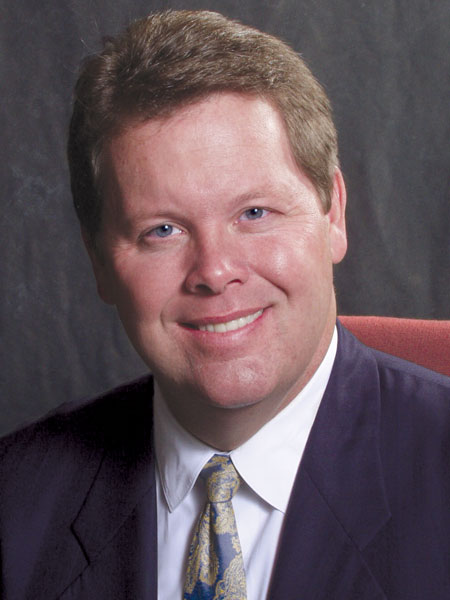The Laws of Profitability – Part Two

As I stated in Part 1 of this article, profit is the main financial goal of any business, and that includes a dental practice. Making a profit can be challenging, though. You have to understand the way a dental practice operates and the profit-making strategies that account for its profit.
At first glance, making a profit seems fairly straightforward — simply sell more dentistry and control expenses. Unfortunately, that statement fails to grasp the essential element that ensures you achieve success in this or any endeavor. I will share with you the key to achieving that success later in this article.
A dental practice cannot open its doors and stay in business without having some idea of what to expect. And it can’t close its doors at the end of the day without knowing what happened. A dental practice must be prepared, plan its future, and control its actual performance in order to reach its financial goals. How, though? Budgeting is one part of the answer.
A dental practice must be prepared, plan its future, and control its actual performance in order to reach its financial goals.
A budget in its simplest terms is an estimate of future events. It is an integrated financial plan put down on paper and entered in a computer spreadsheet. Planning is the key characteristic of budgeting. In our prior article we looked at Revenue Management concepts. In this article we will look at Expense Management, specifically the budgeted expense necessary to achieve anticipated revenue. This is not a random guess, but a forecast that is computed from historical data that can be verified and assumed with some degree of certainty.
In order to provide real value to your practice, a budget must start with a critical analysis of the most recent actual performance of the practice and quantifying the anticipated economic changes you can reasonably forecast. The main purpose of budgeting is to develop a definite and detailed plan for the coming financial period. Practice owners must establish explicit financial objectives for the coming period and identify exactly what has to be done to accomplish those objectives.
Budgeting encourages you to articulate your vision, brand identity, strategy and goals. It is not enough for the owners of the practice to have a strategy and goals in their heads. Developing budgeted financial statements forces them to be explicit and definite about the objectives of their practice, and to formulate realistic plans for achieving the practice’s goals.
Budgeting also imposes discipline and deadlines on the planning process. Good planning results in a concrete course of action with well-defined strategies on how your practice will achieve its financial objectives. Merely preparing an annual budget for your practice and leaving it unchanged for the year is not correct, either. Although adhering to the budget is essential to your success by enabling you to control the operations of your practice, a budget is fluid and you must respond to new information as it is received.
Budget modeling allows you to compare your existing budget with what your budget would look like if you did something different, such as raising your fees or marketing to a different type of patient. Budget models allow you to analyze adjustments before putting them into effect. A budget model enables you to plan and map out your finance strategy for the coming period, in addition to helping you analyze why profit went up or down in a previous period. The practice owner must analyze various budget models on a regular basis to determine if modifications need to be made. These models focus on the key factors that drive profit.
If variations between actual performance and budgeted performance arise, you can affect future outcomes by first correcting any weaknesses in performance, not necessarily by simply modifying the budget. Let’s assume that you’ve carefully studied the historical performance of your practice and established a budget. You’re not “meeting” your budget, and fear begins to replace confidence. As you know, your most valuable asset is your staff. Here is the key to making your budget work and achieving lasting success: your ability to influence your staff to meet the practice’s goals. That’s called leadership.
Weakness in performance is often the result of your team simply not knowing where your practice is going. All great leaders possess two things: They know where they are going and they are able to persuade others to follow. Is your team committed to meeting the financial goals of your practice? Do they even know the financial goals of your practice? Establishing a budget is one way to express the vision of the practice, but you are not leading (influencing) your team if you fail to convey the financial goals of the practice and provide the means to achieve those goals. A leader communicates financial goals through the budget by the methods listed below.
Expense Management may seem like a singular process, but it is inextricably entwined with the Revenue Management concepts we discussed in our previous article. Don’t overlook the power of effective leadership — it is the single most important variable that will make the management of your practice rewarding.
Budget Models:
- Maintenance Model: Even small decreases in the profit margin per operatory or provider can have a drastic impact on profit because fixed expenses don’t go down over the short term and are hard to reduce even over the long term.
- Margin Model: Even small increases in the profit margin per operatory or provider can have a dramatic impact on profit because fixed expenses won’t go up over the short term, although they may have to be increased in the long term.
- Volume Model: Compared with changes in profit margin per operatory or provider, sales volume changes have secondary profit impact; sales volume changes are not trivial, but margin changes can have a bigger effect on profit.
- Downsize Model: You can, perhaps, reduce fixed expenses to improve profit, but you have to be very careful to cut fat and not muscle; reducing fixed expenses may lower the capacity of your practice to provide services and deliver high-quality treatment to patients.
Communicate Financial Goals of the Practice:
- Organization Charts: Developing an organization chart with department heads, clinical and administrative teams, and titles for each team member.
- Positions: Identifying positions to be filled by clinical and administrative staff.
- Licenses and Credentials: Verifying licenses and credentials of every member on the team.
- Tasks: Listing each task for all positions in detailed job descriptions integrating the practice’s policies.
- Providers and Auxiliaries: Maximizing the use of providers and auxiliaries as identified in the dental practice act in each state.
- Performance Goals: Establishing daily, weekly and monthly performance goals that meet expectations as defined in the budget.
- Monitoring: Monitoring performance each day.
- Training or Policy Modification: Correcting performance deficiencies with training or policy modification.
Reinforce a Budget’s Importance and Make Profit by:
- Behavior: Modeling behavior that supports the vision and goals of the practice.
- Daily Huddle: Implementing and attending a daily huddle.
- Weekly Staff Meeting: Implementing and leading a weekly staff meeting.
- Monitoring Conventions: Requiring daily, weekly and monthly monitoring conventions for each department.
- Policies: Following all approved policies of the practice.
- Training: Scheduling appropriate and ongoing training for all tasks.
- Rating Individual’s Ability: Rating each individual’s ability to successfully follow policies and use respective tools.
- Feedback: Providing quantifiable feedback to each team member on a monthly basis.
- Rewarding the Staff: Rewarding staff for meeting and exceeding performance expectations.
Kerry K. Straine, Certified Professional Behavioral Analyst, is president and CEO of Straine Consulting. You can email him at kerry@straine.com or call 800-568-7200 for information on how to receive a free Straine Practice Analysis™.




